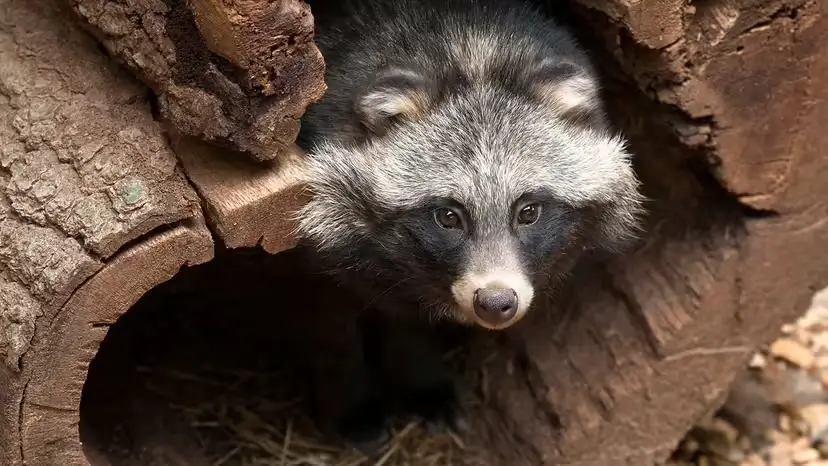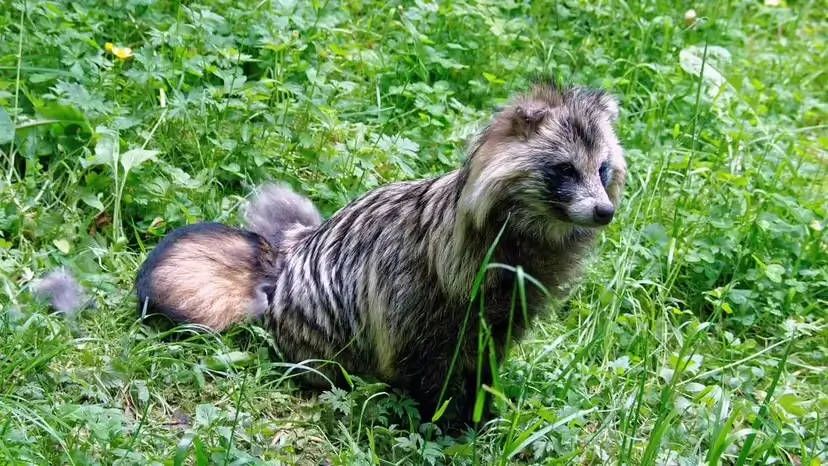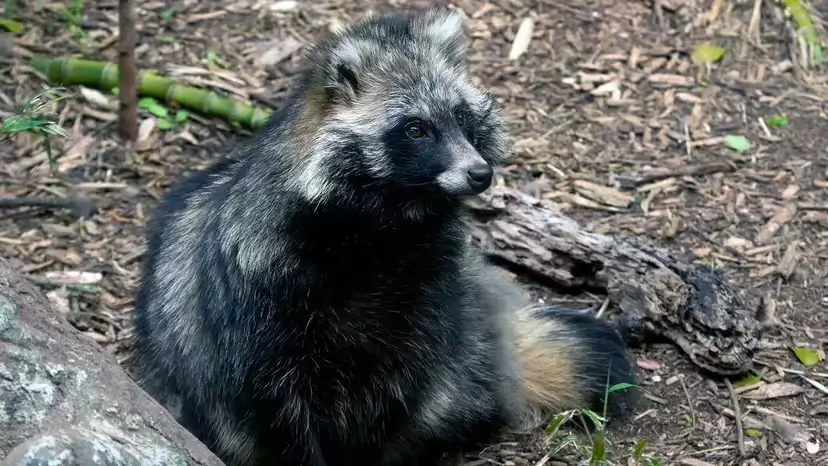A dawn “mystery animal” with a mask-like face and teddy-bear fluff turns up on a farm and the internet screams raccoon. In reality it’s a raccoon dog—also known as tanuki or Nyctereutes procyonoides—a true canid related to foxes and dogs, not to raccoons. Its looks and lifestyle overlap with city raccoons, which is why the confusion never seems to end.

Despite the name, raccoon dogs are members of the dog family (Canidae). Genetics and skull morphology place them closer to foxes than to any procyonid. Their signature “bandit mask,” round ears, short legs, and plush cheek ruffs set them apart in the field. Typical body length is 45–90 cm, tail 15–20 cm, and weight 3.5–10 kg. Coat colors range from yellow-gray to reddish brown; limbs, shoulder saddles, and tail tip often appear darker. In winter the underfur blooms into a dense, heat-saving layer that dramatically “rounds” the outline.
To separate similar species without a checklist, look for a ring-less tail (unlike raccoons), shorter legs and rounder ears than foxes, and a fixed dark face mask and deep seasonal coat shift that pet dogs rarely show.
Raccoon dogs are native to East and Northeast Asia—China, the Korean Peninsula, Japan, and Russia’s Far East. In the 20th century they were introduced to parts of Northern and Eastern Europe for the fur trade; escapees established wild populations and are now designated invasive in multiple countries.
They favor woodland–water mosaics: broadleaf or mixed forests, reedbeds, coastal scrub, and agro-forest edges, usually within reach of streams, ponds, or wetlands. That said, they adapt readily to suburban greenbelts and river corridors, so encounters near towns are not rare.
Primarily nocturnal, raccoon dogs spend the day tucked into dense cover. In cold regions they enter seasonal torpor rather than full hibernation: body temperature and metabolic rate drop, activity shrinks to brief forays for a drink or a quick bite, and autumn weight gain becomes the difference between coasting and struggling. Torpor depth varies with latitude, weather severity, and the animal’s fall body condition; even in captivity, milder “winter sluggishness” is common.

Think broad-spectrum omnivore. Animal foods include frogs and fish along banks, small rodents, bird eggs and nestlings, invertebrates, and roadkill. Plant foods—berries, nuts, fallen fruit, and grains—round out the menu. Near people they may raid trash, which reinforces their “raccoon energy.” In zoos, keepers scatter feed and use scent trails and rip-open devices to trigger sniffing, digging, dragging, and shredding—all natural behaviors that keep minds busy and waistlines honest.
In the wild, raccoon dogs are notable canids for their monogamous pairs and male parental care. Partners forage and rear pups together. Mating typically occurs in early spring; gestation averages about nine weeks; litters often number 4–8 pups (about six is typical). Life span in the wild is 8–10 years; under professional care, longer is possible. Outside breeding, adult social needs are modest, and some pairings—especially same-sex siblings—do better separated to reduce stress.
Across much of Europe and in parts of the U.S., raccoon dogs are regulated or illegal to keep because they are listed as invasive or restricted wildlife. Welfare-wise they are not domesticated, can be skittish and strongly scented, and require rich, variable habitats and seasonal management that homes cannot provide. If you’re curious, the responsible route is licensed zoos and nature centers, where animal welfare and public education align.

Urban overlap is increasing in some regions. Good neighbors secure trash and pet food, protect poultry, and avoid feeding wildlife, which reduces boldness and conflict. If you encounter a sick or injured animal, contact local wildlife authorities—do not attempt a rescue yourself.
In Japan, tanuki are cultural icons—shapeshifting tricksters and symbols of prosperity in art, manga, and storefront statues. That folklore charm shouldn’t be mistaken for temperament. The real animal is a shy, seasonal, scent-laden canid with specific environmental and behavioral needs—fascinating, but very much wild.
Modern facilities provide layered cover, climb-through shrubs, logs, straw nests, water features, and scent routes. Feeding is scattered and hidden; odors are dragged along paths to lengthen search time; seasonal diets and coat care are adjusted with the weather; and social management is tuned to each individual’s tolerance. The goal is choice, challenge, and control—the pillars of contemporary animal welfare.
Dog or raccoon? A dog-family canid, not a raccoon.
Do they hibernate? Not strictly—torpor with short wake periods.
What do they eat? Opportunistic omnivores: small vertebrates, invertebrates, fruit, grains, carrion.
Good pets? No—often illegal and unsuited to homes.
Why invasive in Europe? Fur-farm introductions plus high adaptability and broad diet.
animal tags: raccoon dog
We created this article in conjunction with AI technology, then made sure it was fact-checked and edited by a Animals Top editor.